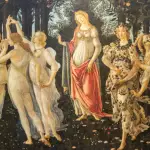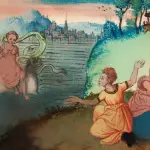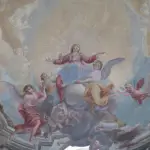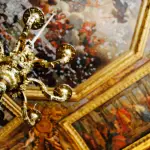1. Nicolaus Copernicus, (1473-1543) has been called the Father of Modern Astronomy. During his time, scholars believed that the earth was stationary, and that the sun and all the heavenly bodies moved around the earth. This theory had been formulated by Ptolemy. Copernicus rejected this thinking, and examined older theories such as the one propounded by Aristarchus. This theory, named the heliocentric model of the solar system, suggested that all the planets moved around the sun. Copernicus proposed that this was the simplest and most systematic of all theories of heavenly motion.
2. He set about to study the subject, and recorded his ideas and findings. These were compiled in his book, On the Revolutions of the Heavenly Spheres, (1543) which is considered a masterpiece of its time. His observations on the movement of heavenly bodies were made without the help of telescopes. His theories based on these observations would be proved correct in later years by Galileo and Kepler.
3. Copernicus was born in Torun, Poland. He came from a well-off merchant family. His father died when he was about 11, and his maternal uncle, Lucas Watzenrode, looked after him. His uncle was an influential clergyman, who would soon become a bishop.
4. Copernicus, even as a young boy, spoke both German and Polish. His scientific work was written in Latin, and he later learned Greek. His love of learning extended beyond languages, and he attended universities in Krakow, Bologna and Padua where he studied subjects as varied as painting, mathematics, astronomy, astrology and medicine. While in Bologna, he stayed with the well-respected astronomer, Novara, and struck up a friendship with him.
5. His uncle made use of his abundant talents in the administration of church affairs. After his training in medicine in Padua, he also looked after medical matters. He attended his duties zealously, and was able to finance his own studies in astronomy, which he pursued in his free time. In 1503, he moved to Lidzbark-Warminski. He lived there for seven years, tending to his uncle, who was now ailing. In 1510, he moved to Frombork Cathedral. Here, he conducted his observations from a turret that was built on the cathedral’s outer wall.
6. In 1514, Copernicus wrote Commentariolus, which was a hypothesis on the movement of heavenly bodies. This treatise contained formulae and observations by which he sought to prove the heliocentric model of the solar system. He circulated it amongst his friends, who, by all accounts did not respond. But it gained both criticism and acclaim from other interested parties.
7. Copernicus was more concerned with perfecting his ongoing work than sharing his findings. In fact, his masterpiece, On the Revolutions of the Heavenly Spheres might never have been published, had it not been for the efforts of George Rheticus. Rheticus had read a paper by Copernicus and sought him out. He was fascinated by Copernicus’ theories and stayed with him for two years. He was instrumental in getting Copernicus’ book published, and in May, 1543, he was able to put a printed copy of the work in Copernicus’ hands soon before he died.
8. Copernicus was not aware that his theories met with fierces opposition from the Roman Catholic Church and Martin Luther. After his death, his book was banned by the Church, and remained on the list of proscribed books for about three centuries.
9. The original manuscript of On the Revolutions of the Heavenly Spheres was lost for about 300 years, and was discovered in Prague around the middle of the 19th century.
10. Copernicus was a man of many talents. In the course of his administrative work for the church, he also interacted with the political dispensations of the time. He worked with public officials on currency matters, and derived theories which were forerunners of what would later become the quantity theory of money, and Gresham’s Law.











Leave a Reply